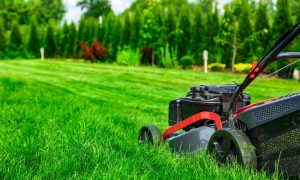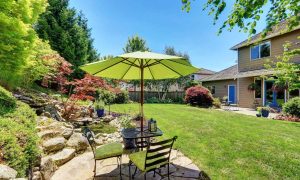Summer brings both joy and challenges to gardeners everywhere. The blazing sun can scorch delicate plants in just hours. Finding beautiful flowering plants that love the heat becomes a mission. I’ve tested dozens of annuals in my Zone 8b garden over fifteen years. My front yard faces west and turns into a furnace by mid-afternoon. Through years of trial and error, I’ve discovered which plants actually thrive in these conditions. Some supposedly “heat-loving” annuals from garden centers wilted within days. Others surprised me with their resilience and beauty. This article shares my hard-won findings about truly heat-tolerant annuals. These seven summer superstars will transform your garden into a colorful oasis. They’ll keep blooming even when temperatures soar into the upper 90s. Let’s explore these remarkable plants that laugh in the face of summer’s fury.
What plants do well in full hot sun?

Finding plants that flourish in scorching conditions requires understanding heat tolerance. Not all sun-loving plants can handle the intense afternoon rays. Many plants advertised as “full sun” actually prefer morning sunshine with afternoon breaks. True heat warriors have developed special adaptations over generations. Some have waxy coatings that prevent moisture loss. Others grow fuzzy leaves that reflect sunlight away from sensitive tissues. A few develop deeper root systems to access cooler soil below the surface. The best summer annuals combine these survival strategies with beautiful blooms. Plants from naturally hot regions often perform best in challenging gardens. Varieties native to South Africa, Mexico, and the American Southwest typically handle heat well. The following seven beauties have proven themselves repeatedly in my own garden inferno. They continue flowering when other plants have given up entirely.
South African Phlox
South African Phlox stands out as a remarkable summer performer in hot gardens. This isn’t the traditional phlox you might know from cottage gardens. Its botanical name is Jamesbrittenia grandiflora, though garden centers often label it South African Phlox. The plant forms a neat mound about 12-18 inches tall and wide. Tiny leaves cover the stems, creating a lush backdrop for the flowers. The blooms appear in incredible abundance from late spring until first frost. Each flower measures about an inch across, with five petals and a contrasting eye. Colors range from lavender and purple to pink and white, depending onthe variety.
Last summer, my South African Phlox survived three weeks without water during a vacation. The edges looked crispy upon my return, but a light pruning revived it quickly. This plant thrives in containers where many other flowers would fail. Its roots need good drainage, making raised beds another excellent option. My neighbor’s plant cascades beautifully from a hanging basket on her west-facing porch. The flowers attract small butterflies but, fortunately, seem resistant to deer browsing. I’ve grown this plant for four consecutive summers in increasingly hot conditions. It continues to impress me with its bulletproof performance and cheerful display.
Tuberous Verbena
Tuberous Verbena offers incredible staying power through summer’s worst heat waves. This variety, known scientifically as Verbena rigida, differs from common garden verbenas. It grows from underground tubers that store water and nutrients, which allows it to survive drought conditions that would kill other plants. The plant is about 12-24 inches tall with stiff, rough stems. Clusters of tiny purple-magenta flowers form flat-topped groups that hover above the foliage. The blooms appear continuously from late spring through early fall without pause.
I first discovered Tuberous Verbena at my grandmother’s farm in Tennessee. Her plants had survived decades with minimal care in poor clay soil. She casually called it “that purple stuff that never dies.” After adding it to my garden, I understood her assessment completely. The plant spreads slowly but steadily through both seeds and underground tubers. It can handle blazing sun in locations where few other flowering plants survive. Butterflies adore the nectar-rich blooms and visit constantly. Hummingbirds occasionally stop by as well, though they prefer flowers with deeper nectar tubes. The plant requires almost no maintenance beyond occasional watering during extreme drought. Its only potential drawback is its spreading nature, though this is a benefit. Free plants appearing in new spots save me money and effort every season.
Wild Watermelon
Wild Watermelon zinnia brings exceptional heat tolerance and eye-catching color to summer gardens. This improved variety of Zinnia elegans significantly outperforms older zinnia types. The double flowers measure 2-3 inches across, with layers of petals in watermelon pink. Each bloom features pale edges that create a glowing effect in garden beds. Plants grow 18-24 inches tall and almost as wide, with strong, upright stems. The blooms start appearing in early summer and continue until frost without pausing.
My experience with Wild Watermelon zinnia began after a gardening friend shared seeds. She insisted these zinnias handled our humid southern summers better than any other variety. She wasn’t exaggerating in the slightest. While my other zinnias developed powdery mildew by July, these stayed clean and healthy. The plants shrugged off temperatures above 95°F for weeks on end. Their water needs remained surprisingly modest once established in the garden. Cutting the flowers increased production, making them perfect for summer bouquets. The blooms lasted nearly a week in vases, brightening my kitchen during the hottest days. Butterflies and bees visited constantly, creating a lively garden scene. After seeing the cheerful display in my front border, several neighbors asked for seeds. This zinnia has earned a permanent place in my summer garden rotation.
Euphorbia

Euphorbia ‘Diamond Frost’ revolutionizes how we think about heat-tolerant annuals in the garden. This breakthrough plant produces thousands of tiny white flowers from spring until frost. The blooms hover above the foliage like a cloud of miniature butterflies in constant motion. Plants grow about 12-18 inches tall and wide, with a naturally mounded shape. Fine-textured blue-green leaves create an attractive backdrop even when the plant isn’t flowering. Unlike many euphorbias, this variety contains minimal irritating sap.
I first encountered Diamond Frost at a botanical garden display during a 103°F July day. While other plants in the demonstration beds drooped pathetically, this euphorbia looked pristine. The garden staff confirmed it hadn’t received supplemental water for two weeks. I immediately purchased three plants for my home garden’s most challenging spot. I include it in every container and several garden beds five years later. The plant performs equally well in ground soil or pots with almost zero maintenance. It pairs beautifully with bold-colored flowers, making those companions appear even more vibrant. Diamond Frost rarely needs deadheading, as spent blooms disappear into the display. The only maintenance involves occasional light trimming to maintain the desired shape. This plant transforms difficult hot spots into garden highlights with minimal effort.
Globe Amaranth
Globe Amaranth offers exceptional heat performance while providing long-lasting color in summer gardens. The botanical name, Gomphrena globosa, hints at the perfectly round flower heads this plant produces. Each bloom resembles a colorful clove, measuring about an inch across. Depending on the variety chosen, colors include purple, pink, white, and red. Plants typically reach 18-24 inches tall, with strong stems that rarely need staking. The flowers appear continuously from early summer through fall frost.
My discovery of Globe Amaranth happened by accident at a farmers market. An elderly vendor sold bunches of dried purple flowers alongside her vegetables. She explained that these “bachelor buttons” grew on her family’s farm during the Dust Bowl era. They survived when virtually nothing else would grow in the heat and drought. I purchased seeds she had saved and planted them in my garden’s hottest section. The results exceeded all expectations through multiple 100°F days. The plants never wilted, even when nearby marigolds collapsed from heat stress. Butterflies visited regularly, especially small skippers that seemed particularly attracted to the blooms. When dried, the flowers maintain their color, providing material for winter arrangements and crafts. I now save seeds each fall to continue this remarkably tough plant’s legacy in my garden.
Ornamental Sweet Potato Vine
Ornamental Sweet Potato Vine provides spectacular foliage when flowering plants struggle in extreme heat. This decorative cousin of edible sweet potatoes brings tropical drama to summer gardens. Varieties like ‘Blackie’ offer deep purple-black leaves that create striking contrasts. Others, like ‘Marguerite,’ feature chartreuse foliage that brightens shady corners. The heart-shaped leaves grow rapidly on vines reaching 6-8 feet long. Plants form tubers underground that sometimes survive mild winters.
After seeing it thrive at a local botanical garden, I incorporated Sweet Potato Vine into my garden. The display garden staff explained it required virtually no maintenance through their brutally hot summers. My experience ultimately confirms this – plants grow faster during heat waves. Unlike many foliage plants, sweet potato vines never burn or crisp around the edges. The vines spill beautifully over wall edges and container sides, softening hard landscaping lines. While mainly grown for foliage, tiny morning-glory-like flowers occasionally appear if you look closely. The plants respond well to light trimming if they become too exuberant in their growth habit. At the season’s end, you can sometimes dig and store the tubers for replanting next year. This reliable performer has transformed several challenging spots where flowers repeatedly failed in my landscape.
Tangerine Queen
Tangerine Queen cosmos delivers exceptional summer color with remarkable heat tolerance. This improved variety outperforms older cosmos types in challenging conditions. The semi-double flowers measure 2-3 inches across in glowing orange-gold tones. Plants grow 3-4 feet tall with delicate, fern-like foliage that adds texture to garden beds. The blooms appear abundantly from early summer until frost without slowing down.
I learned about Tangerine Queen from a Texas gardening magazine article about heat-proof plants. The author claimed these cosmos flourished even during their record-breaking summer temperatures. Skeptical but hopeful, I ordered seeds to test in my challenging conditions. The results convinced me ultimately – these plants thrived when temperatures remained above 95°F for weeks. The flowers attracted countless butterflies, especially Monarchs, during their fall migration. Goldfinches visited daily to feast on developing seeds if I failed to deadhead promptly. Unlike some cosmos that flop over in summer storms, these maintained reasonably upright habits without staking. The plants require minimal care beyond occasional deadheading to encourage continuous flowering. Their airy growth habit allowed planting heat-sensitive companions in their dappled shade. This cosmos has become an anchor plant in my summer garden design.
Tips for Planting & Caring For Flowering Annuals
Developing successful summer gardens requires correct planting procedures and proper maintenance techniques. The requirements for annual flowers differ substantially from those of perennial plants in multiple essential aspects. Knowledge about these contrasting requirements significantly enhances garden productivity. The following sections present necessary steps that guarantee successful outcomes with heat-loving annuals.
The provided advice originates from extensive hands-on experience in demanding gardening environments. These strategies solve the main garden challenges that affect plant growers during summer heat. The recommended guidance will produce remarkable improvements in your summer garden outcomes.
Fertilizing Annuals
Fertilizing summer annuals requires a balanced approach that promotes flowers without excess growth. Many gardeners mistakenly apply too much nitrogen, resulting in lush foliage but few blooms. Summer annuals perform best with slow-release fertilizers applied at planting time—products containing equal amounts of nitrogen, phosphorus, and potassium work well for most varieties. Water-soluble fertilizers applied every two weeks at half-strength can supplement slow-release products.
I’ve experimented with various fertilizing approaches over many seasons. My best results consistently come from incorporating compost into the soil before planting. This provides a foundation of nutrients that release slowly through the season. I supplement with diluted liquid seaweed every three weeks, which adds trace minerals. This approach produces sturdy plants that flower abundantly without becoming leggy. Excessive fertilizer reduces heat tolerance by promoting soft growth. Container plants need slightly more frequent feeding than those in garden beds. Always water thoroughly before applying any fertilizer to prevent root damage. Reduce or eliminate fertilizing during extreme heat waves to avoid stressing plants.
Mulching Annuals
Mulching is essential for annual summer success because it controls soil temperature levels and helps conserve water. Organic mulch applied at two inches depth decreases watering requirements by half. Shredded leaves, pine straw, and delicate wood chips are suitable choices for mulching materials. After plants establish, wait to apply mulch while keeping a small opening around stems to stop rot. Periodically replace the mulch layer during summer months because decomposition will take place.
Implementing appropriate mulching methods in my garden led to a remarkable change in appearance. The summer afternoon temperatures in my soil reached above 100°F before I added mulch to the garden. The temperature conditions created root growth cessation and stress in heat-tolerant plants. Applying pine straw mulch resulted in soil temperatures staying below 85°F during all hot days. Plants reached maturity more rapidly while needing much lower amounts of water. An unexpected benefit appeared in the form of fewer weeds competing with my annuals. The mulch layer prevented many weed seeds from germinating in the first place. Those that did emerge proved easier to pull from the moisture-retaining soil beneath. Mulching represents the single most effective summer gardening practice I’ve adopted.
Caring for Annuals

Summer annual care requires practice methods in addition to conventional irrigation and nutrient application. Regular deadheading enables plants to maintain continuous blooming throughout the season. Faded flowers should be removed immediately, with stem cutting performed at the leaf or bud location. Regular trimming of the plants helps shape them nicely while stopping them from becoming leggy. The technique becomes vital for plants that receive partial shade during cultivation.
The method through which plants receive water plays a significant role in determining summer annual plant performance. Deep periodic waterings stimulate deep root penetration instead of the shallow watering practice. Plants with extensive root systems withstand heat stress much more effectively. I prefer to soak my plants once or twice weekly instead of regularly sprinkling water. Morning irrigation enables leaves to dry completely during the daytime, leading to substantial disease prevention.
Plants require temporary shade during afternoon hours through umbrellas or shade cloth to protect themselves during heat waves. The basic gardening practices I implemented successfully lengthened the blooming period of my plants by numerous weeks. To keep pests at bay, it becomes crucial to conduct regular checks on plants that experience lower natural resistance during stressful hot weather. Regular observation enables prompt intervention that prevents significant problems from developing.
Conclusion
The success of summer gardening relies on selecting suitable plants and offering proper gardening care. This article presents seven heat-tolerant annuals that create attractive garden displays during the summer season. The plant species Euphorbia ‘Diamond Frost’ and Tangerine Queen cosmos flourish during hot conditions. Natural selection in severe native habitats has developed their ability to survive. The maintenance practices outlined help maximize their performance throughout the growing season.
My garden has transformed since focusing on truly heat-tolerant varieties. Previously, I struggled with plants that looked magnificent in May but collapsed by July. Now, my garden remains colorful and inviting even during August heat waves. Visitors often express surprise at the abundant flowers during the hottest months. These seven remarkable plants have changed my summer gardening experience completely. They’ve allowed me to enjoy my outdoor space year-round without frustration or disappointment. Try these exceptional performers in your garden this season. You’ll likely wonder how you gardened without them in previous summers.
Also Read: Essential Spring Lawn Care Tips for a Healthy Yard
FAQs
Water deeply when the top inch of soil feels dry, typically 1-2 times weekly, depending on your climate and soil type.
Yes, all seven plants perform excellently in containers with appropriate drainage and slightly more frequent watering.
Most definitely! Globe Amaranth, Tangerine Queen, and Tuberous Verbena particularly attract butterflies and bees.
Most benefit from regular deadheading except Euphorbia ‘Diamond Frost,’ which self-cleans effectively.
Tuberous Verbena and Ornamental Sweet Potato may survive in zones 8 and warmer if mulched heavily.



